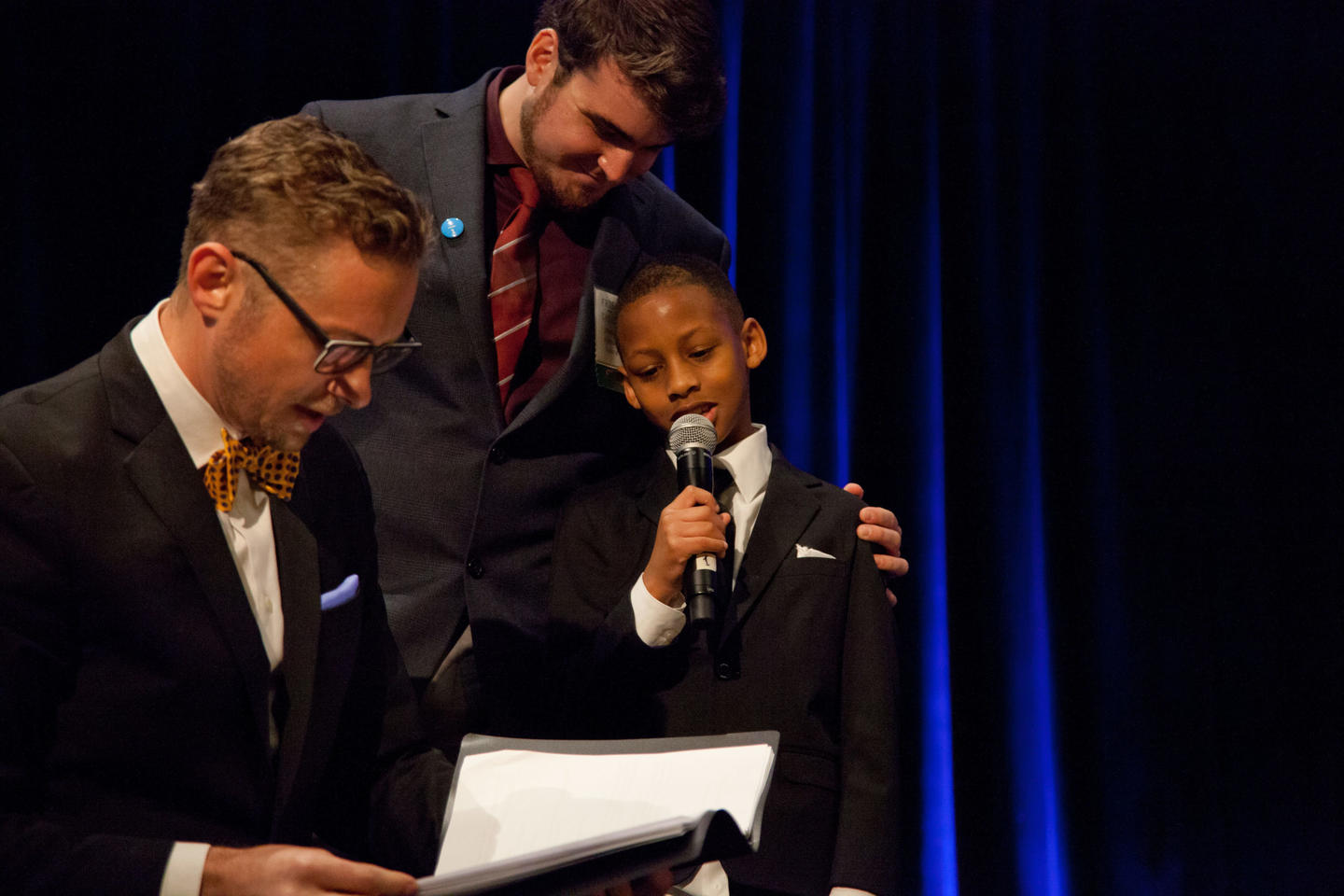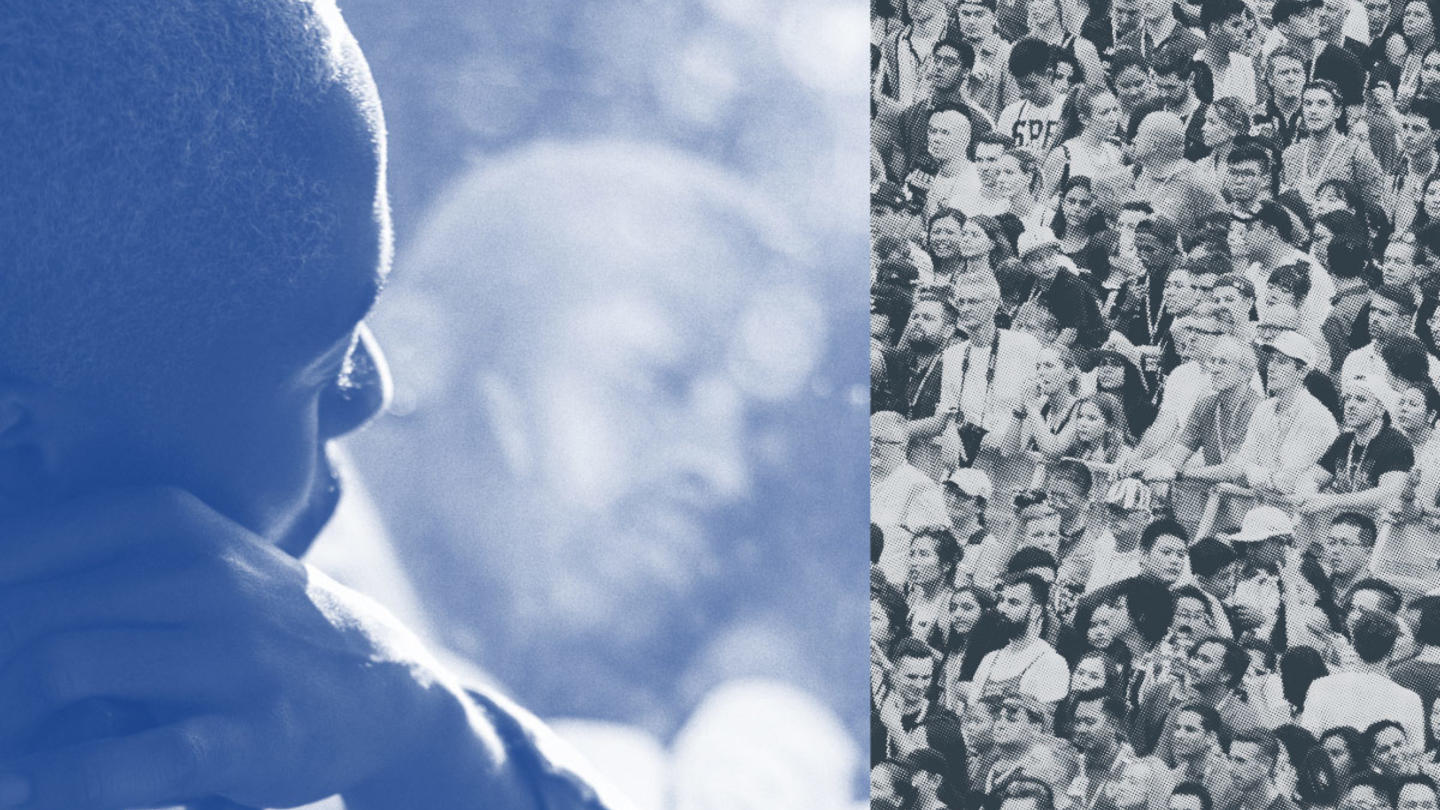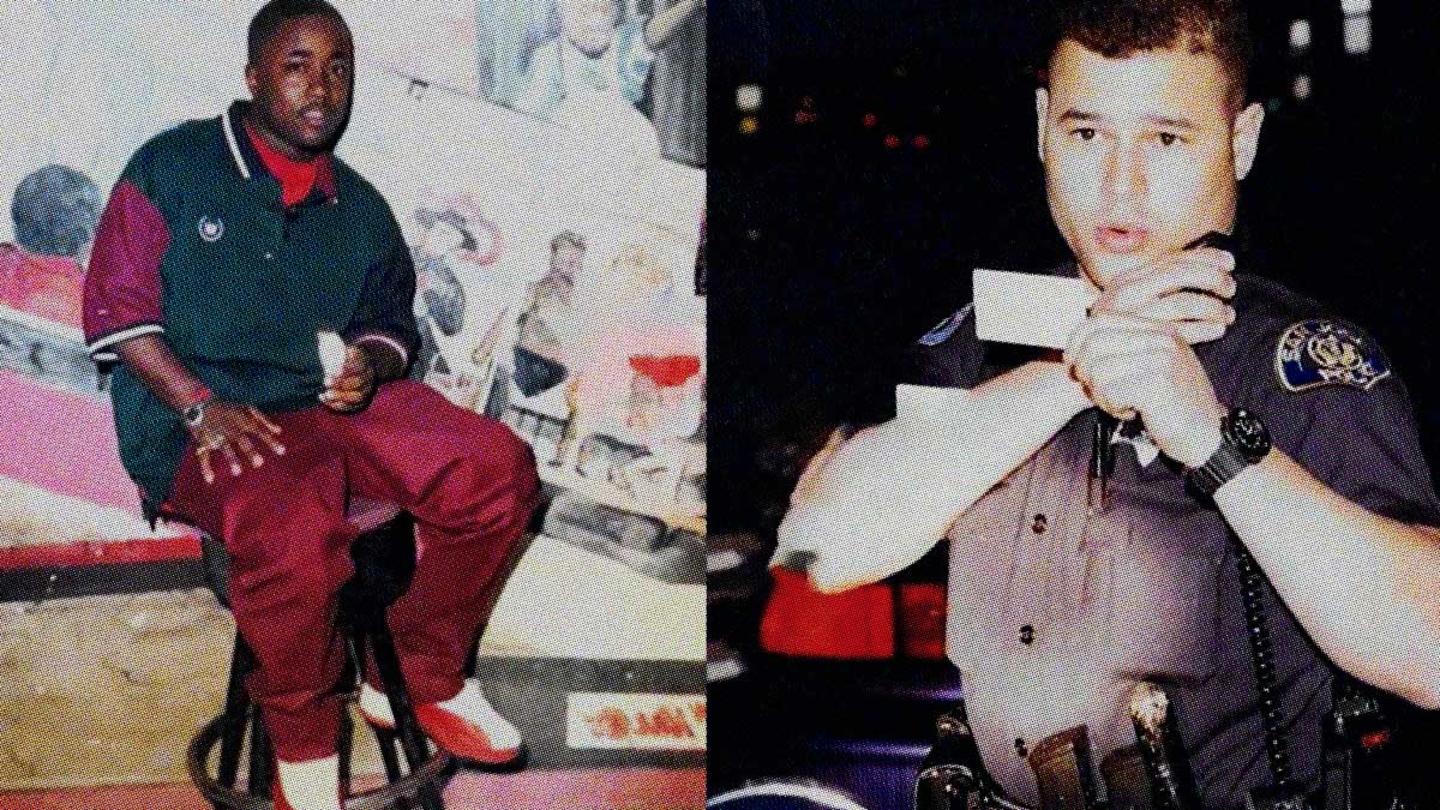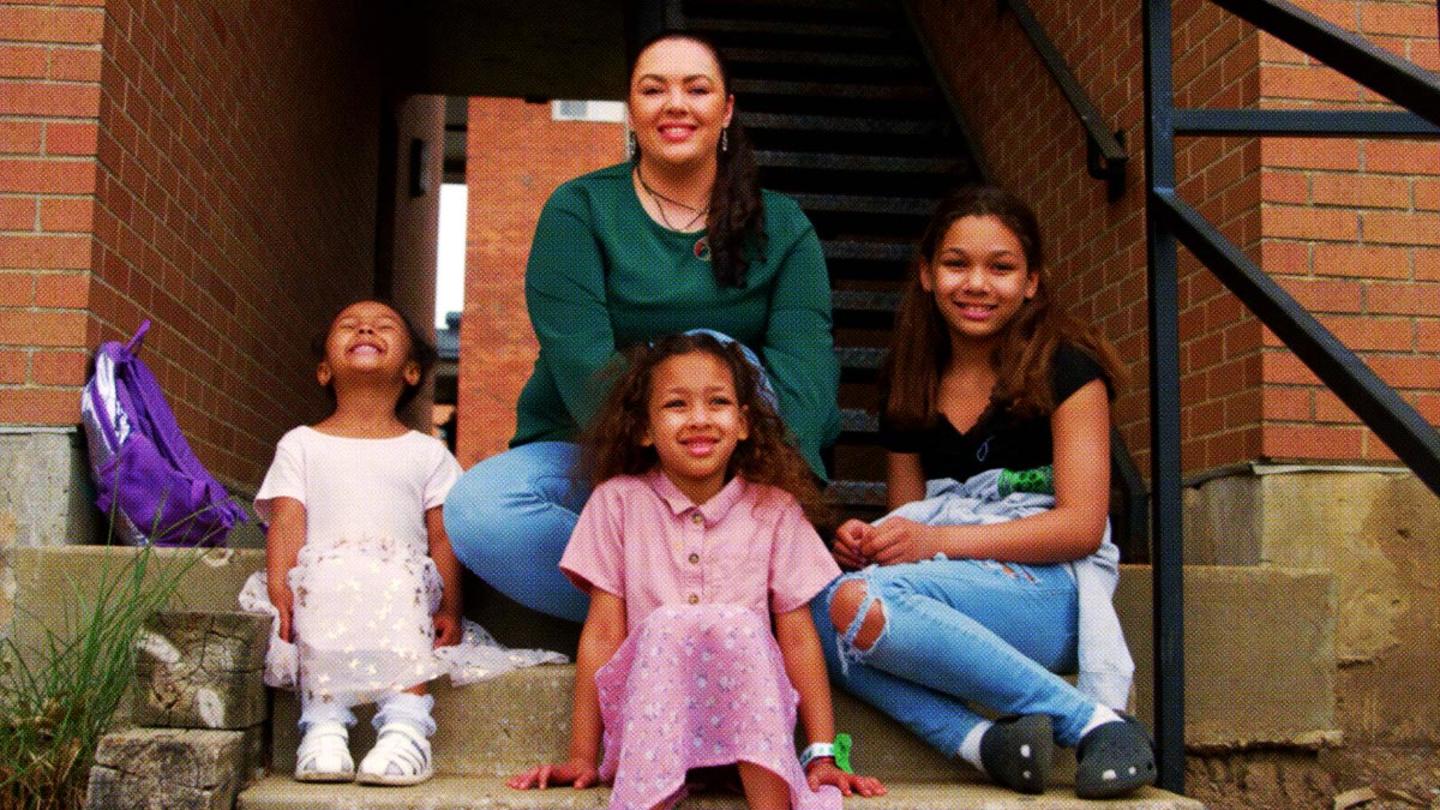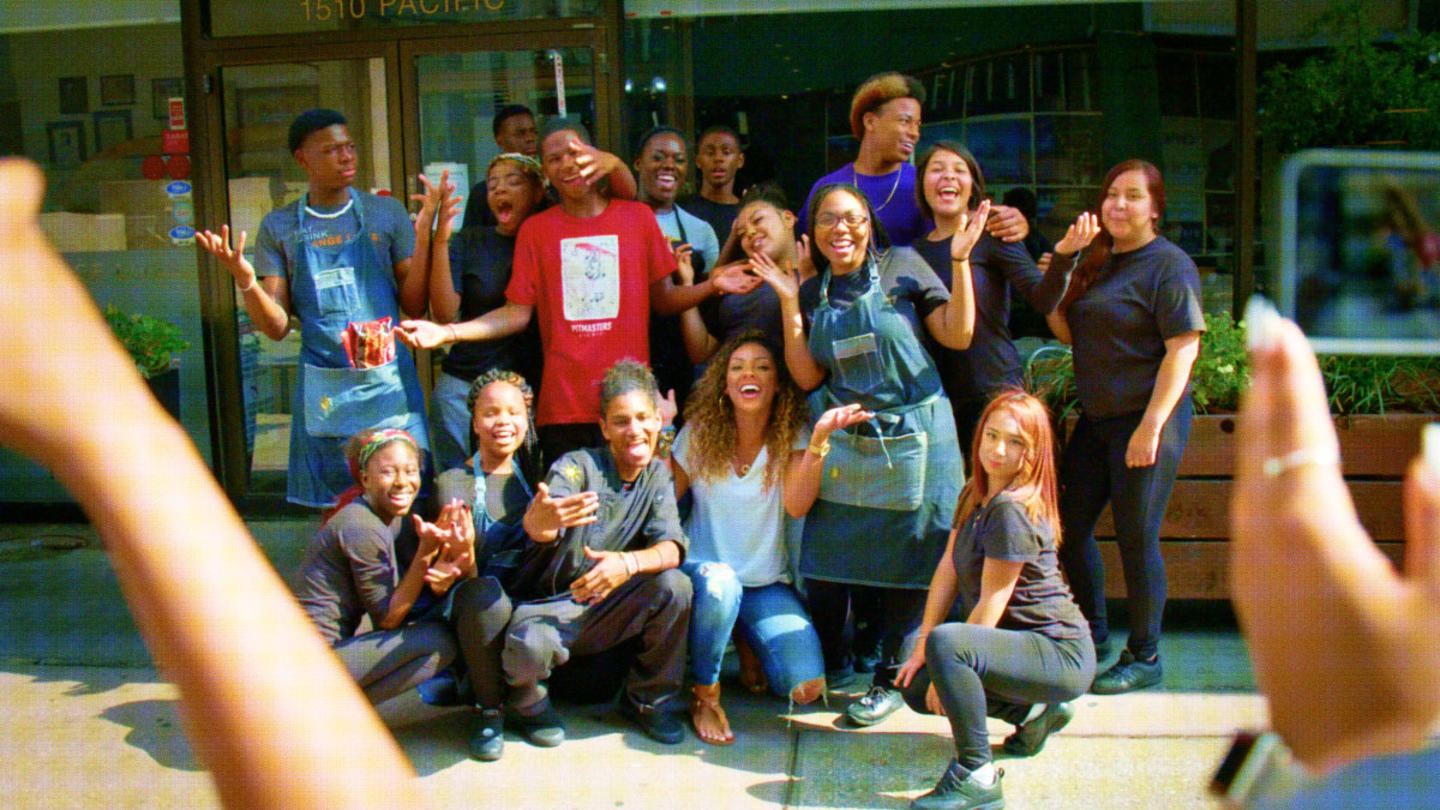The single most important factor determining the future of a child is the presence of a consistent and caring adult. Just one. At least one.
While in some ways disadvantaged by a lack of stability and nurturing early on, children born into violence or poverty often develop ahead-of-their-age resilience, adaptability, self-reliance, and survival skills. It's a mentor's job to uncover those strengths and empower their full expression—ensuring, if you will, that every child's potential is recognized and encouraged for the benefit of themselves, their families, their communities, and all of society. Special attention to and investment in this young potential is essential if we are to build a future better than our present.
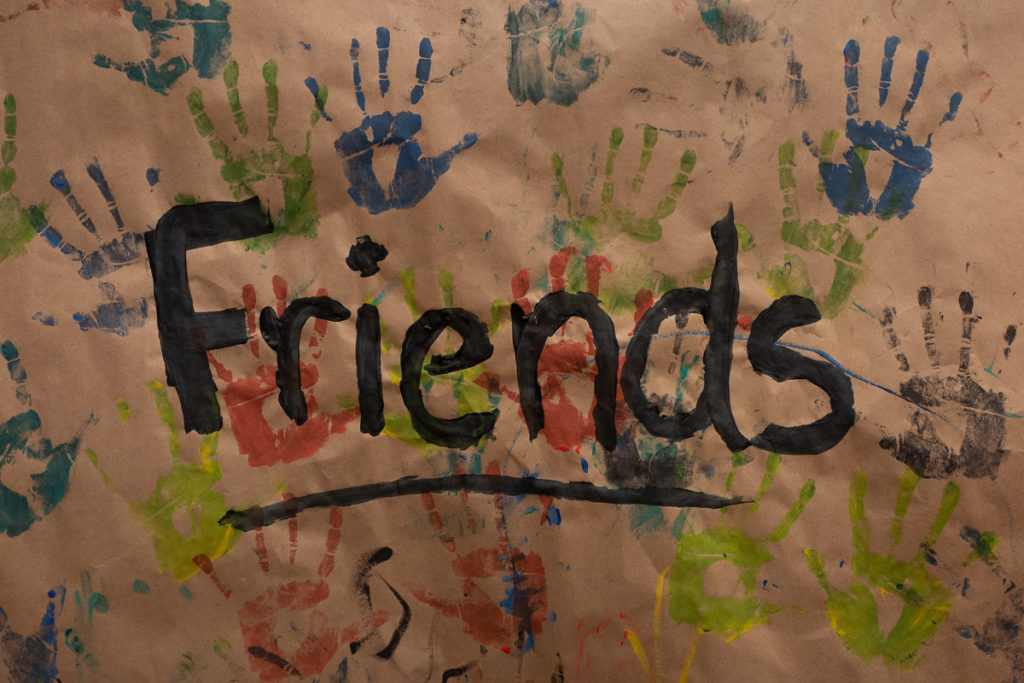
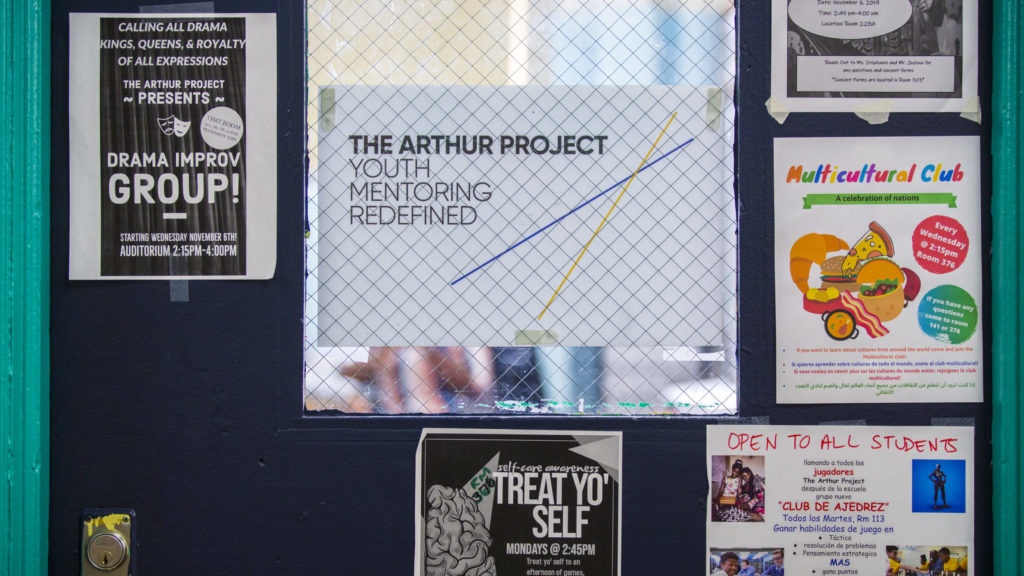
January is National Mentoring Month and a great opportunity to celebrate the many ways mentoring initiatives are affecting the next generation. To start, we look at two vastly different approaches to the same goal: Connect youth to committed, caring mentors as quickly and consistently as possible.
Interestingly, both organizations—together serving thousands of children nationwide—were founded by individuals with their own experiences of fragile support systems during childhood. They are living and rippling proof of the exponential impact mentoring has for all of society.
We begin in the Bronx with The Arthur Project (TAP), a startup mentoring organization focusing on mentor support during the fragile, chaotic years of middle school.
For TAP co-founder Liz Murray, any bright spots in the middle school experience were shaped by hallway homework sessions with her upstairs neighbor and family friend, Arthur. A long-time friend of her parents, Arthur would often show up with an extra pot of chili or stew, knowing that in the chaos of addiction, feeding the kids was not always possible or prioritized.
"I remember being right about middle school age and he came in," says Liz, "things had taken a turn, they got really bad. He was realizing we were starving. Bringing those pots of food was no longer enough. Our parents were using drugs, needles, out in the open in the kitchen. Needles spread out across the Formica table top. They've got arm ties, they're shooting up. I'm watching TV like 10 feet away with my back to them. Arthur comes in with a pot of food and he looks, he snaps off the TV, 'Hey, why don't you come to the hallway Liz, bring your homework, let's talk.'"
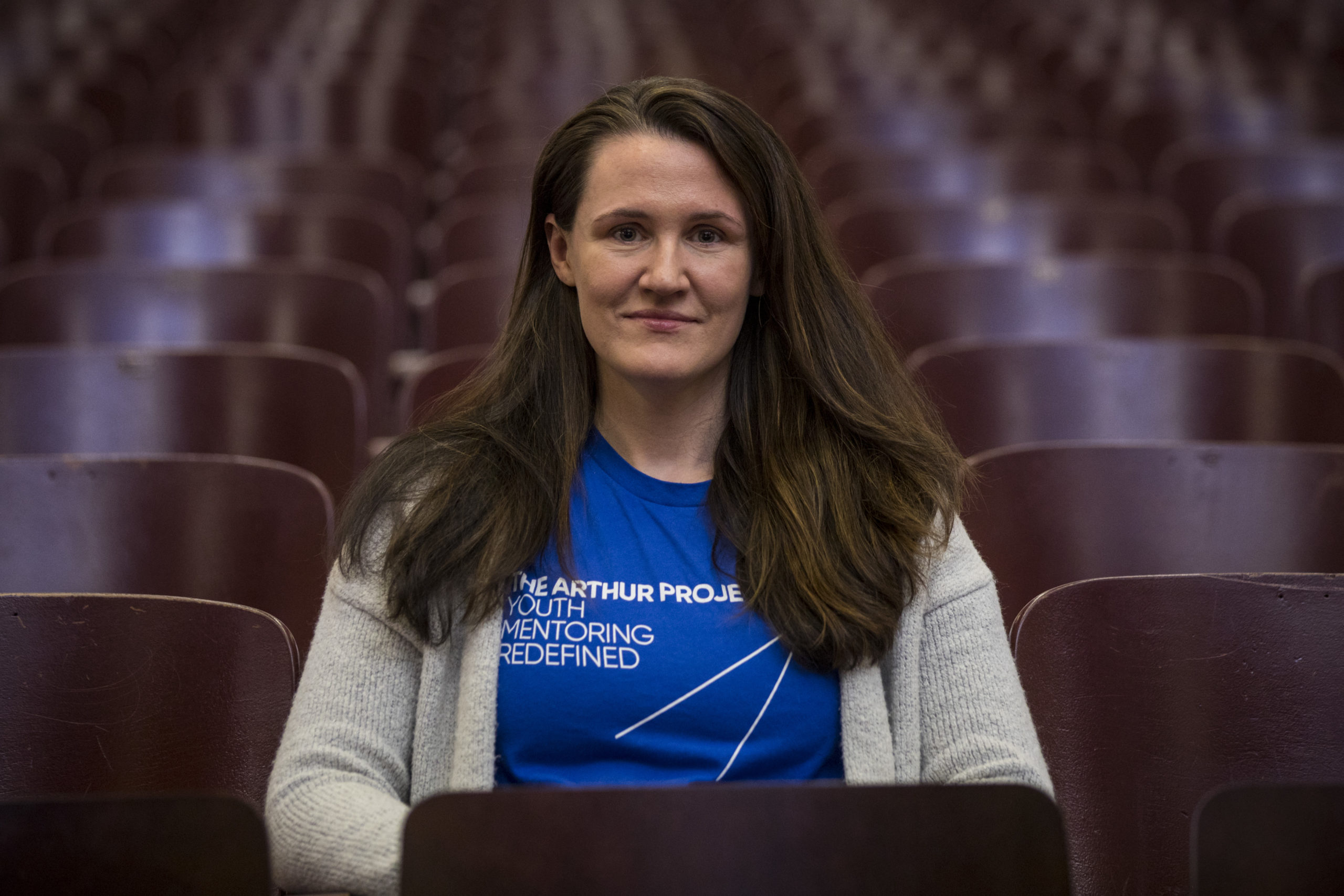
When her mother began extended stays at the hospital and her father moved into a shelter, Liz was moved into a group home followed by a series of precarious placements. She was frequently truant—showing up to school only for the cafeteria's chicken patty—and often across the table from an authority figure with Arthur, her advocate, at her side. That was when Arthur began seeking custody.
She was 15 and in foster care waiting out the adoption process when she got the call: Arthur had collapsed and died. "We knew he had asthma," says Liz, "but now I look back, it might've been cardiac asthma, I can never really know. He collapsed and died and I heard the whole horrible story later. I fell to my knees when I found out and the next few months are a blur."
She slept at all her friends' houses. "I was homeless and did not really realize it. I know that sounds odd, but the labels people put on you later can be different than the way you see yourself," she says. "The first phase of youth homelessness is often couch surfing. You can't imagine that your good buddies are not going to be able to say 'yes' every night, and eventually people stop opening their doors, and you go, 'Well, maybe it's just tonight that I'm in the hallway.'
"I'd put my head down at night on a book bag and sleep in the hallway. That was my pillow. I'd sleep in the hallway, and like any other human being I thought about what a better life would look like. The thing is, I didn't know how to make one."
Liz Murray, Co-Founder, The Arthur Project
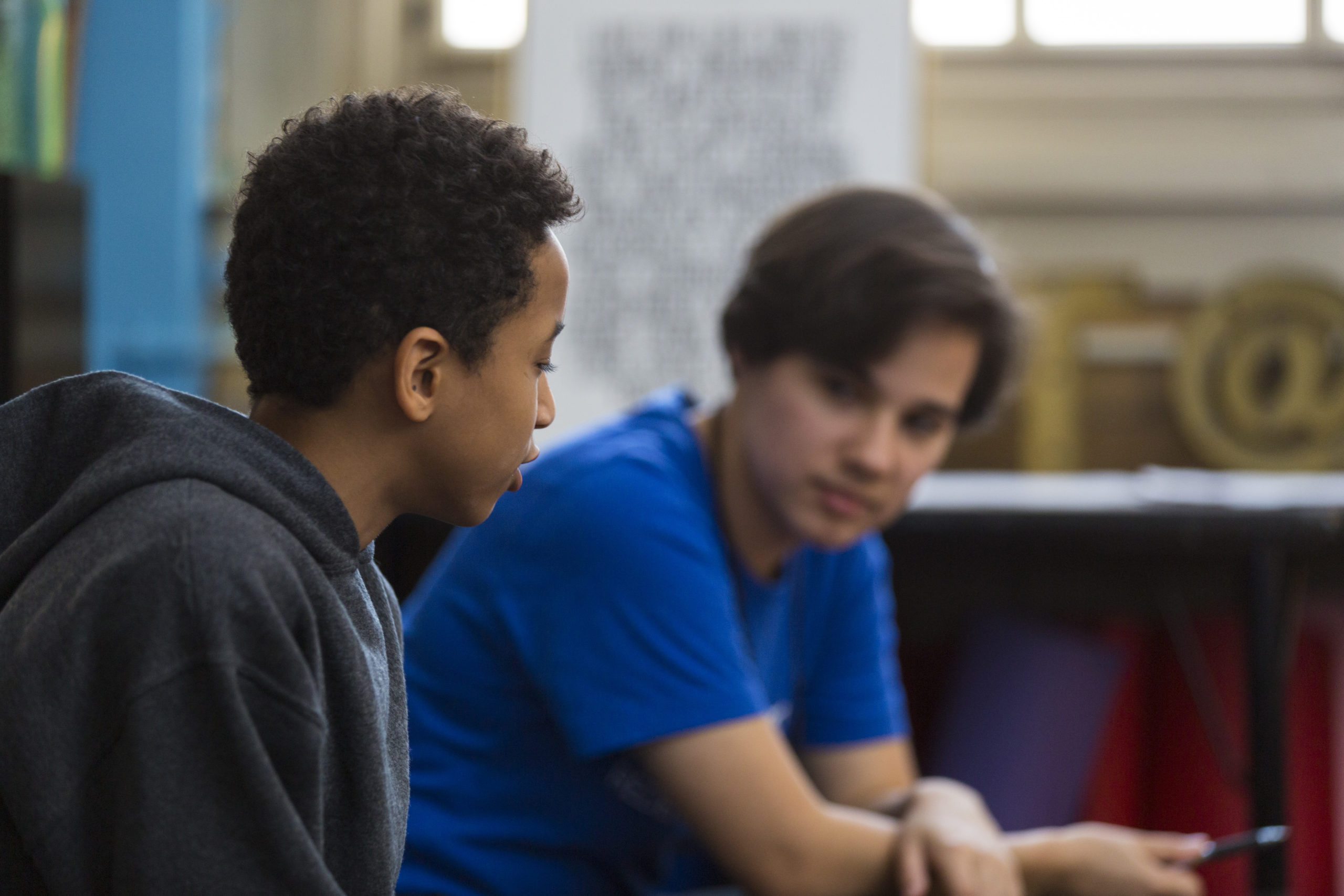
As an entrepreneur and executive, Jeff Muti had heard at least 200 talks before he heard Liz Murray share her story. He had never asked any of the speakers a question. Not once. But when Liz shared her conviction for the transformative role of mentors in the lives of middle school youth, it struck a chord with his wonderings about 'second mountains' and his imagining of a vocation after his entrepreneurial career. And so he asked her all the questions, which led to a year of research and planning alongside Liz, who at this point had remarkably gone from being homeless to graduating from Harvard University. She eventually made her way back home to the Bronx and attributes her success to having a stable, caring adult mentor; Arthur.
This discovery process eventually led them to co-found The Arthur Project to invest big in the volatile middle school years of under-resourced, full-of-potential youth in the Bronx. "Middle school is when children are solidifying, 'Who am I?' And I'm of the belief that when you know who you are, that's what tells you what's possible," says Liz.
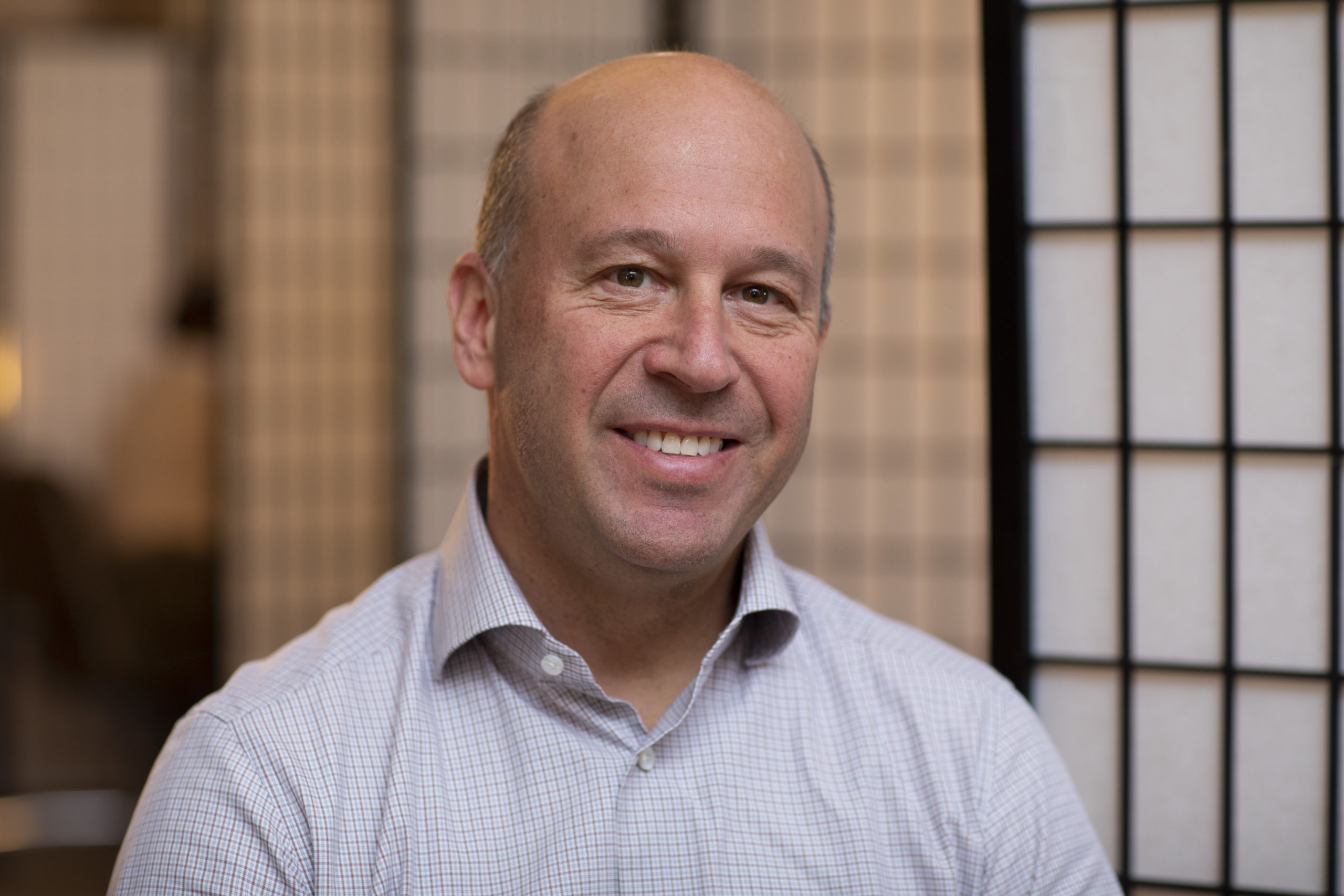
Social workers and psychologists generally agree that middle school is the real beginning of identity formation and individualization—also known as the Bermuda Triangle of adolescence. While elementary school still involves heavy coddling, middle schoolers often grow into parentified roles as they care for younger siblings, even while experiencing awkward physical maturation and navigating (or not) choices about who they want to be.
Like Devon*, a third year Arthur Project mentee who moved with his mother to the Bronx from Jamaica five years ago. After improving his math grade from 79 to 93 in sixth grade, he set his sights on becoming valedictorian, deciding to keep company with those who motivate him to achieve his goals. His mentors, he says, have helped him evaluate peer influences, make choices about who he wants to be, what he wants to achieve, and how to make it happen.
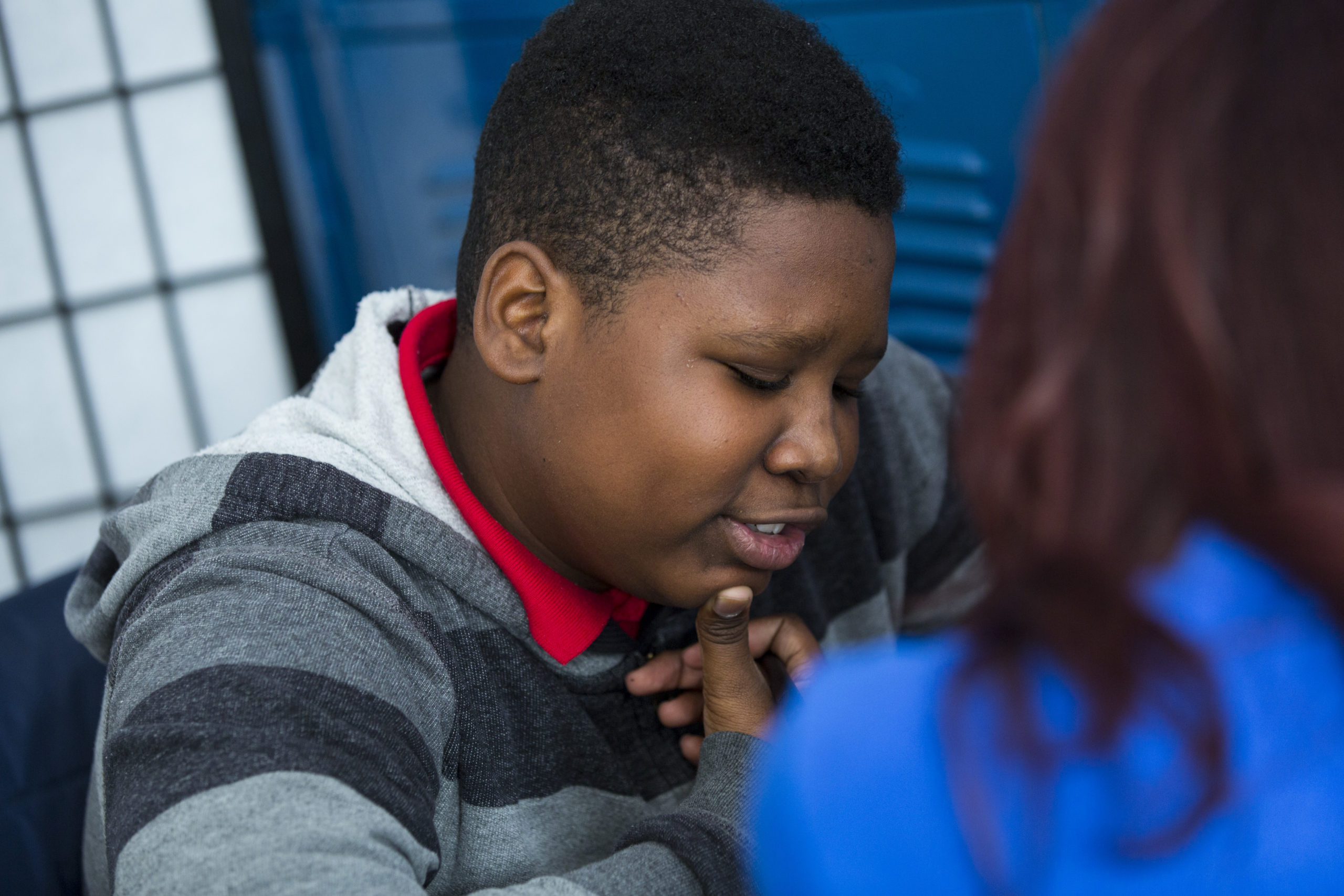
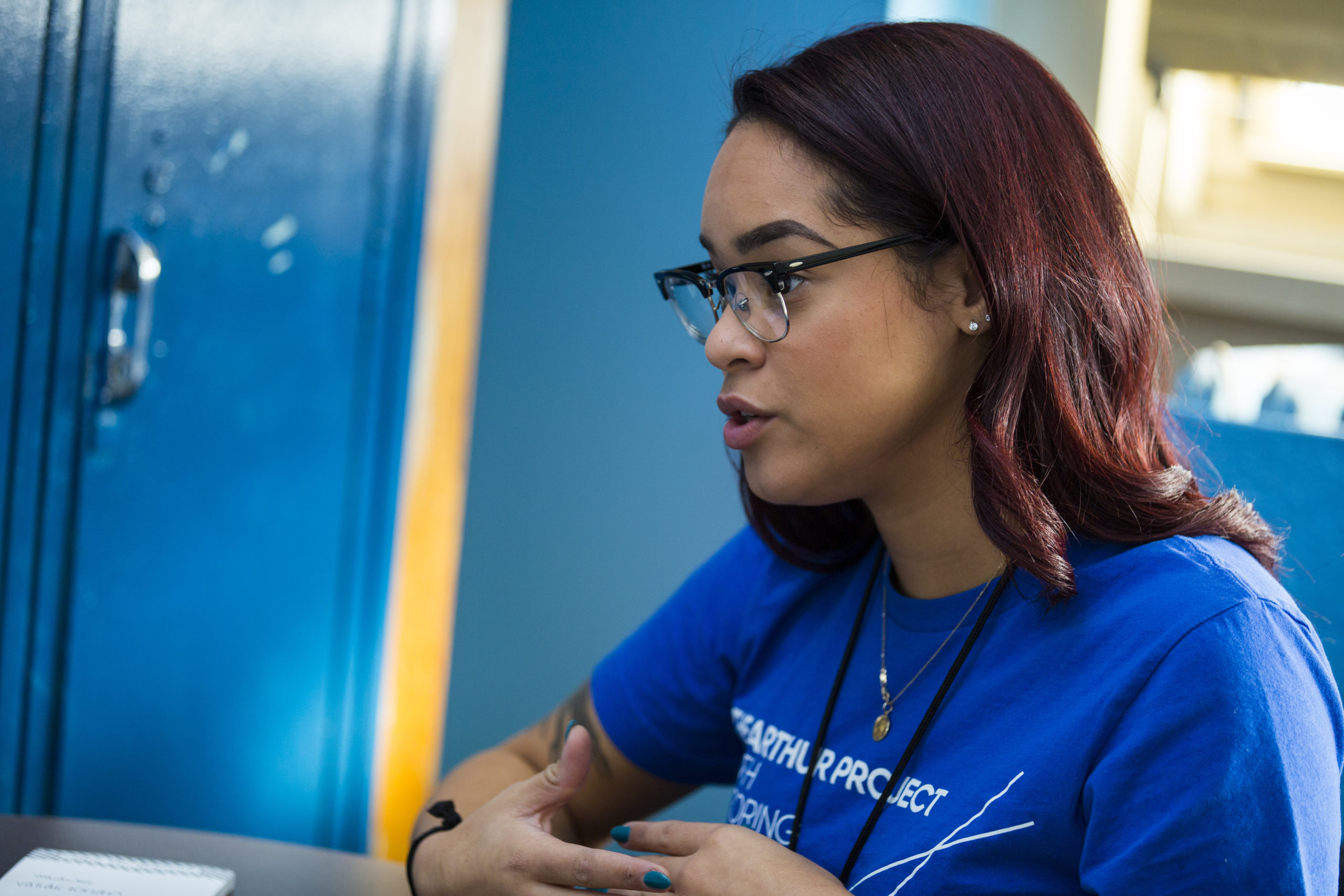
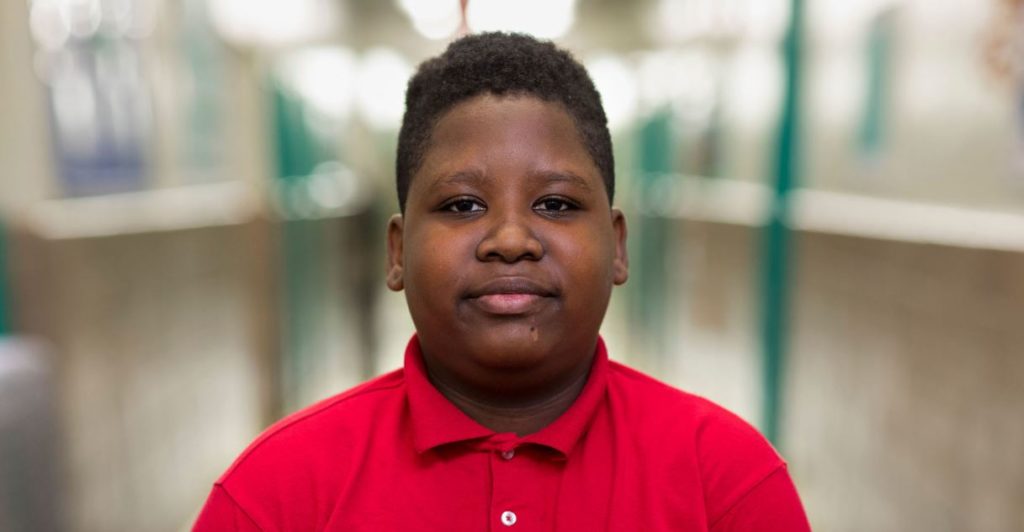
"What I now know is that people will grow into the conversations that you create around them," says Liz. "Really what Arthur fostered was a sense of, 'This is not enough and you have somewhere to be,' and because of that I was able to then look for other resources, look for another school, identify a mentor and a teacher who could advocate for me. I knew what an advocate felt like, and I think that made the difference."
"The same thing happened to me," says TAP Family Liason Anastasia Allen, "where a teacher saw that I was starting to go to a different direction and stopped me and said, 'You're better than this.' It shifted my life and I've been in education for a very long time since then." Anastasia now works alongside students' parents as they navigate the adolescent season and prepare for the rigors of high school, an example of a living, breathing virtuous cycle in her own right.
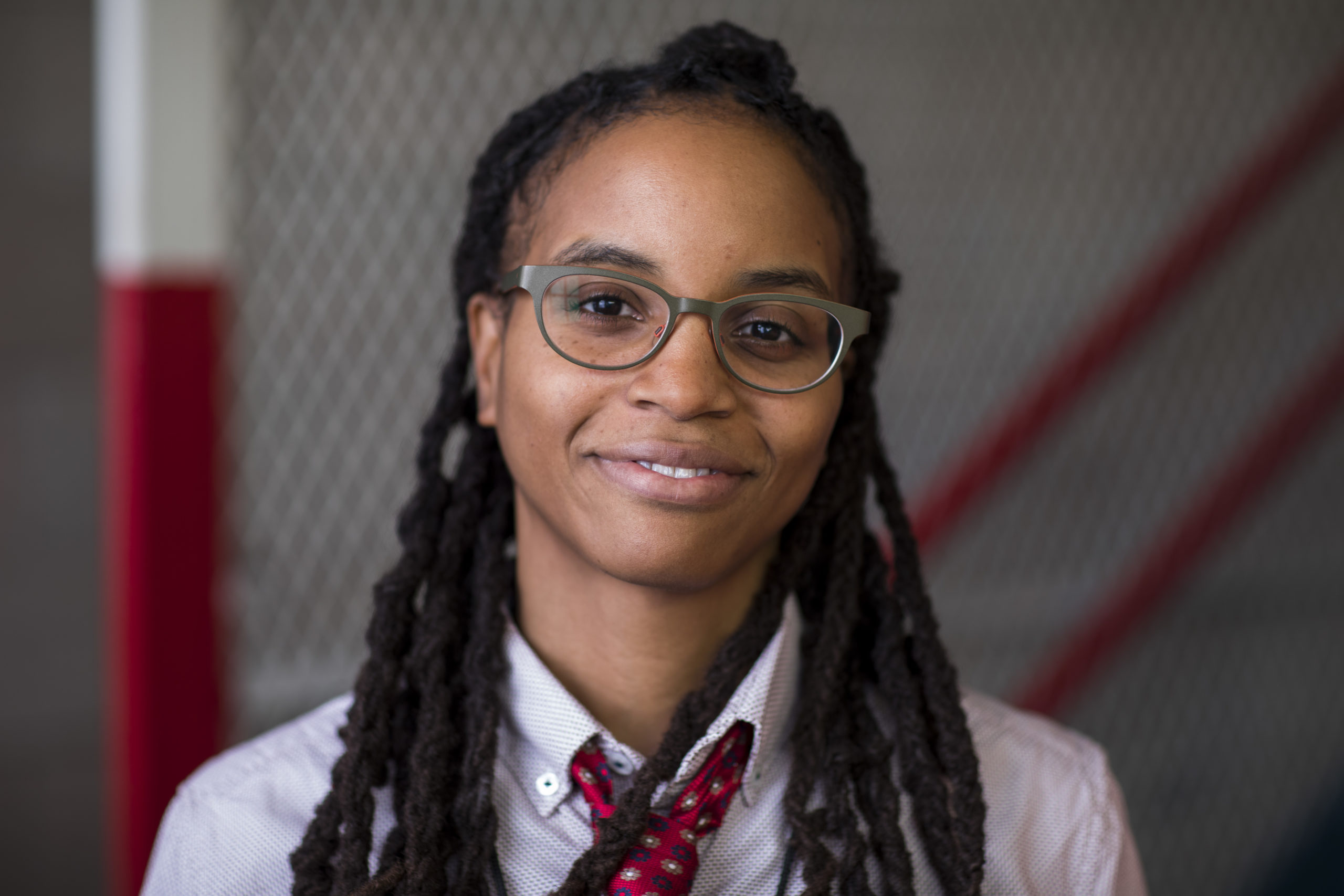
The Arthur Project's mentorship approach is unique in a couple key ways. First, TAP mentors are also social work students earning academic credit for their real-world experience. "The Arthur Project provides our students with that strong foundation for them to talk about whatever skills that they need to in any transferrable way, to be able to take it with them as they continue their educational or career path," says Surendra Bipat, assistant director of field education at Hunter College's Silberman School of Social Work.
Second, mentor-mentee relationships are purposefully only a year long. Originally, the team wasn't sure if it might be detrimental for students to have different mentors throughout middle school. But three years in, it is proving to be a competitive advantage, offering students an opportunity to learn how to transition relationships healthily and communicate about expectations.
When students begin with the Arthur Project in sixth grade, they're told, "Welcome to sixth grade! Here's your sixth grade homework teacher, here's your sixth grade math teacher, here's your Arthur Project sixth grade mentor." Students know that they're going to change mentors at the end of the school year.
Now in its third transition, 100% of students who have transitioned grades have voluntarily stayed part of the Arthur Project. "We've had a hundred percent continuity so far," says Jeff, "And again, I think it's a testament to the fact that the relationship doesn't have to be 10 years to be powerful. In fact, in some ways it may be better if they get three different experiences from three different people."
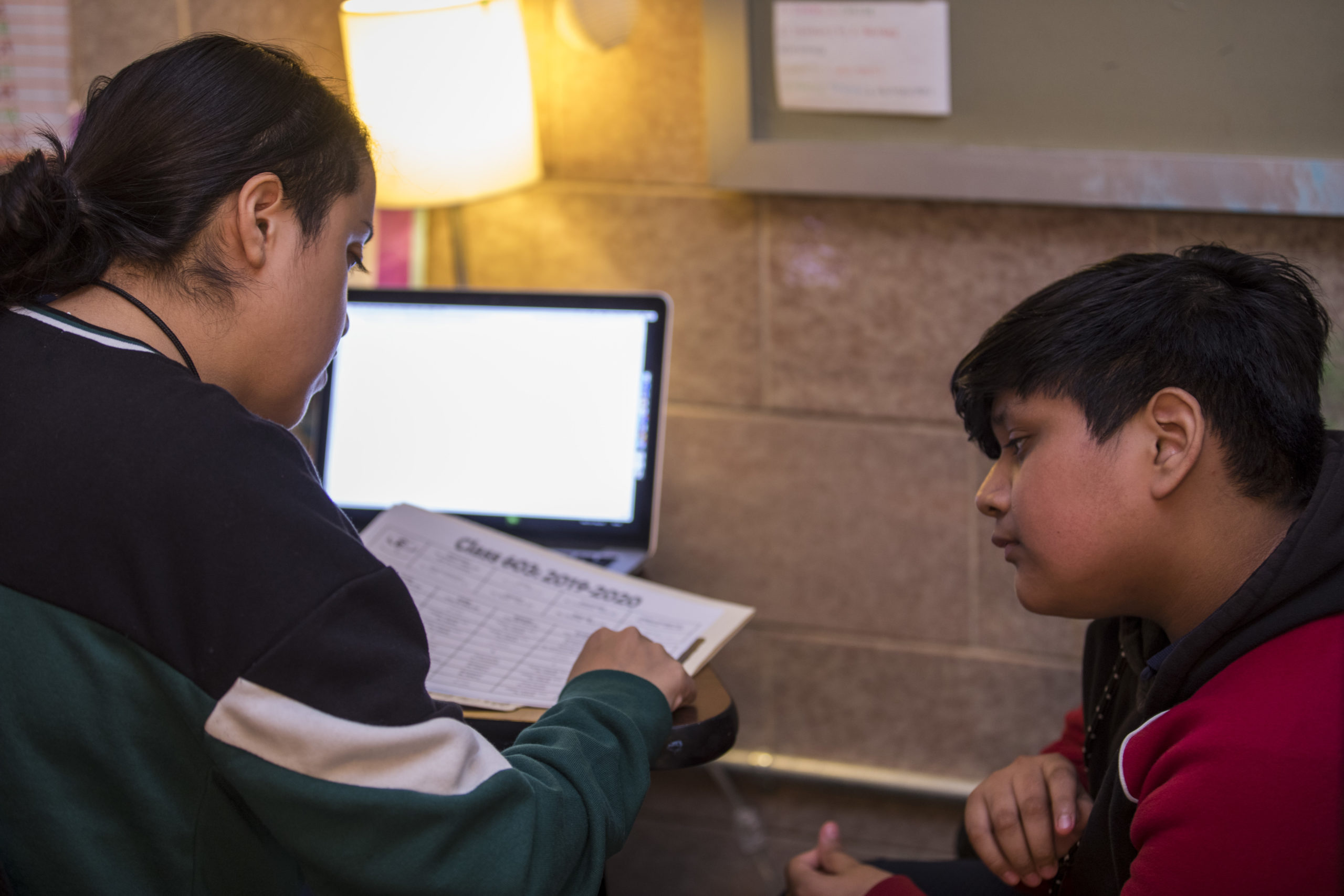
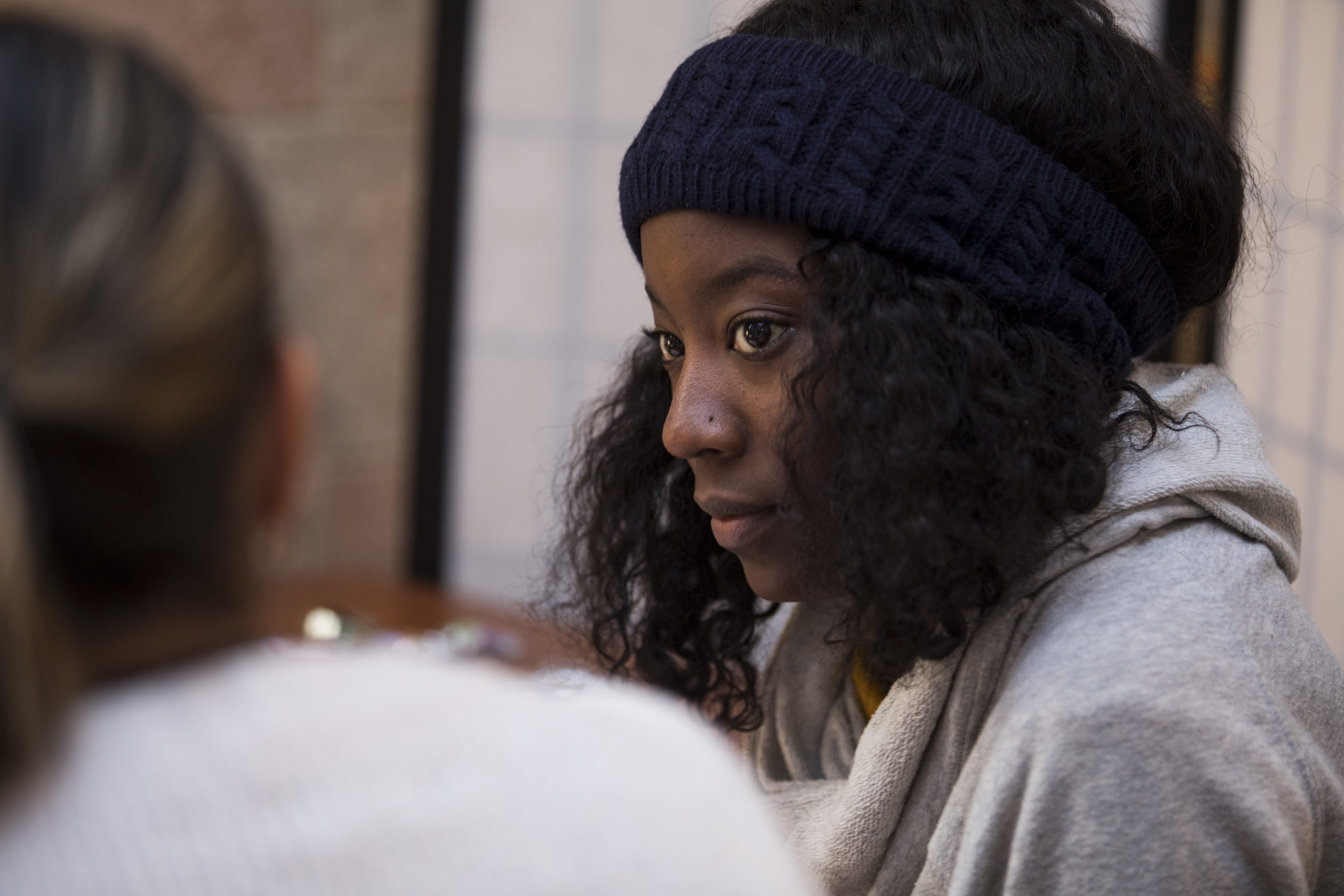
"Right now, nationally, if you look at how we're serving middle school, the conversation of the urgency of that transition point is really underrepresented I would say, and the Arthur Project comes in for precisely those reasons at that time," says Liz.
"A lot of these kids are wise beyond their years because of the things that they face in their everyday lives," says Myosha Tane Smith, TAP mentor and social work student at Hunter College. "Coming through these doors, walking through a metal detector at 12-years-old is traumatizing and desensitizing and perpetuates the idea that black and brown children aren't able to excel, and this is the expectation."
"This experience changed me going forward as I'm studying to be a clinician, to listen actively, effectively, efficiently, it restored a lot of my wounds that I had as a child and understanding what mentorship was about and how things could have been a little different for me if I had someone to listen in seventh grade. So being that I was able to do that for someone else. I was able to pay it forward," says Myosha.
"When you equip a child with what they need to thrive, then they're able to give their gifts to society and we don't miss out. Here you have future people who will have strong families and be productive in society. You are unleashing the gifts that they have. It's not, 'they're so lucky to have us,' it's, 'we don't want to miss out on what they have to offer.'"
Liz Murray, Co-Founder, The Arthur Project
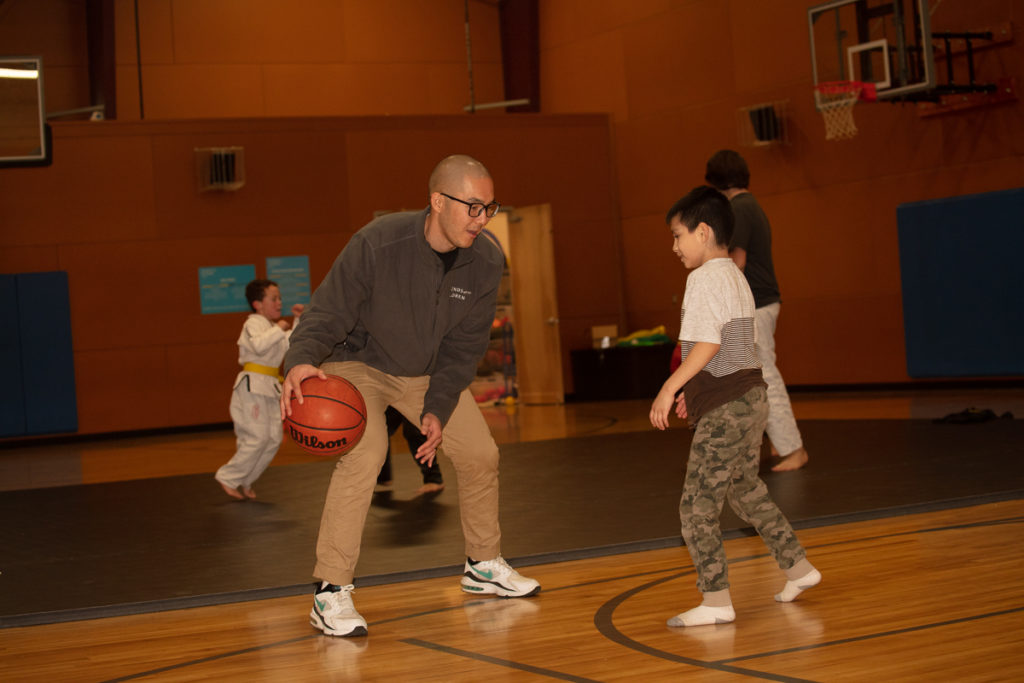
Though innovating deeply for their context in the Bronx, Liz and Jeff originally patterned the Arthur Project after one of the nation's leading mentoring organizations, Friends of the Children (Friends), a non-profit founded in 1996 by Duncan Campbell in his hometown of Portland, Oregon. While the Arthur Project is currently in its third year, Friends of the Children is in its 26th year with 21 chapters — the newest additions being Detroit, Michigan, Fargo, North Dakota, and Salt Lake City, Utah —committing to 12+ years of mentorship with every child in its program.
This is perhaps the signature of Friends' gold standard model and method: Once a child enters the program, they are guaranteed a mentor for the next 12+ years. To accomplish this, mentors at Friends of the Children are salaried and trained professionals who commit for at least three years. "By asking for a three-year commitment, our "Friends" (the title for their on-staff mentors) stay six to seven years," says CEO Terri Sorensen. "We plan on each child having two mentors—one for kindergarten through fifth grade and one for adolescence. We actually have mentors who've been here almost the entire 26 years of our program."
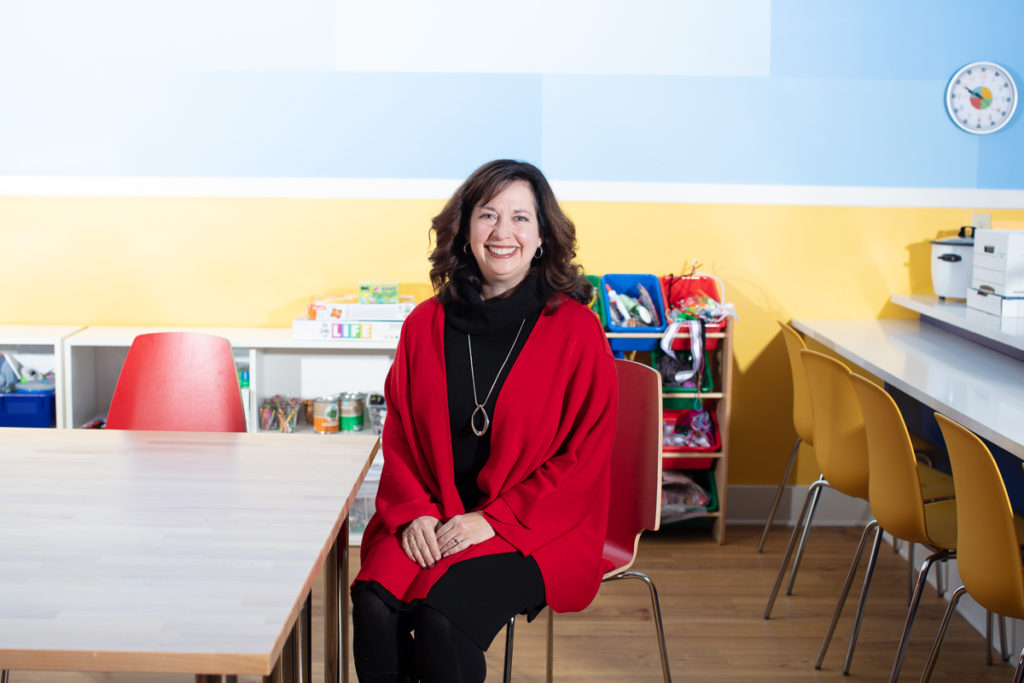
"What intrigued me about the job was the fact that these relationships start so young," says Spencer Hill, national program director. "It is truly an early intervention. The fact that we're staying with this kid until they graduate high school, no matter what. I don't believe there is another organization like this anywhere in the country."
To identify four- to six-year-old candidates in need of a mentor, Friends of the Children uses a process of school selection. Staff visit kindergarten classrooms to observe for six-weeks, looking for those kids who aren't coming to school, who are wearing the same clothes day after day, very aggressive or withdrawn, and behind academically.
"The obstacles our kids are facing," says Terri. "Gosh, most have a parent who did not graduate from high school; 60% of the parents have been incarcerated, 85% were teen parents; over half of our kids have been involved in the foster-care system; a lot of our parents have been involved in the foster-care system."
"We proactively go out and select the kids who need us most, and because of that, we need to make sure that we're with them for the long haul."
Terri Sorensen, CEO, Friends of the Children
Through the school selection process, staff get to know the child, the teachers, and ultimately sit down with the principals and counselors to hear about the risk factors of that child, like 'one of 10 children, walks a mile to and from school by themselves, family's been involved in gangs,' all of the different pieces related to the family—looking, of course, for those kids with the most risk factors and the least amount of protective factors.
Spending a significant portion of its annual budget (10-15%) on internal and external evaluation, Friends has developed a data-driven approach that consistently delivers powerful and proven core competencies, while adapting to meet the unique needs of each community it's a part of. In Los Angeles and New York, Friends is seen as a prevention to child welfare and foster care. In Fargo, North Dakota it partners with homeless shelters to serve kids and families most in need. In Klamath Falls, Oregon Friends was invited into one of the Native American communities.
"We hired two Friends from the community of Chiloquin, which is primarily Native American, to serve kids," says Terri, "This model can work anywhere, and we've seen it do that. It's just a matter of listening to the community and partnering with them. We do not go anywhere that doesn't want us or need us."
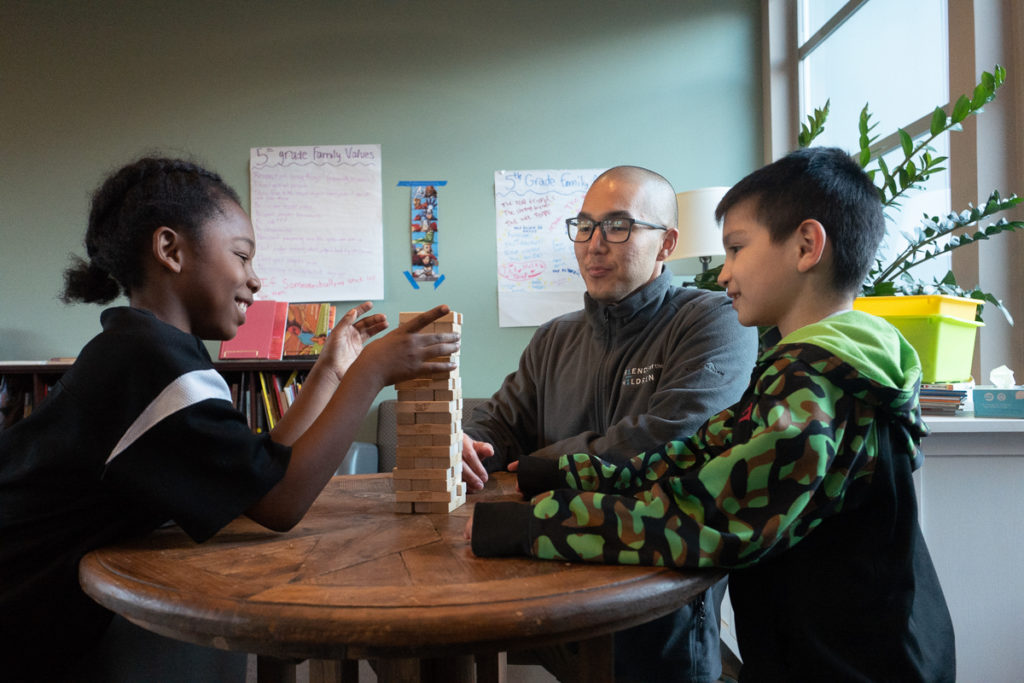
This is another signature of its model: Though open to invitation and new community partnerships, the organization doesn't seek expansion for the sake of it. In fact, there's a strategic and intentional high-barrier to entry. "When we set about scaling seven years ago, we really looked at all the lessons we'd learned and we knew we needed to raise a substantial amount of seed capital up front," explains Terri. "We require three years of seed capital to be raised before we'll launch in a city. In addition to that, we want no more than 50% of that funding to be from any one source, so it's diversified funding for sustainability, and ensures we have champions in that city."
Three years ago, two women got 50 people to donate $1.8 million and launched Friends in Austin in just three months. "It was really incredible," says Terri. "Of course, we flew down, presented, gave them the tools to set up their own chapter. We helped hire the leadership as well as the Friends, and trained everybody. Now, after a couple of years, they're operating on their own, but they're still part of our network. We're having monthly calls. We all use one database so we can do studies and see best practices across our network."
While it might seem expensive to have professional, salaried mentors, the data shows sustained and substantial impact as well as serious cost-effectiveness: "It costs about $10,000 to $12,000 per child per year for our program. We had the Harvard Business School Association of Oregon do a return-on-investment study—it was a very conservative study as it didn't even take into account health benefits and things like that. It showed, for every dollar invested, the return was over $7 in savings," says Terri.
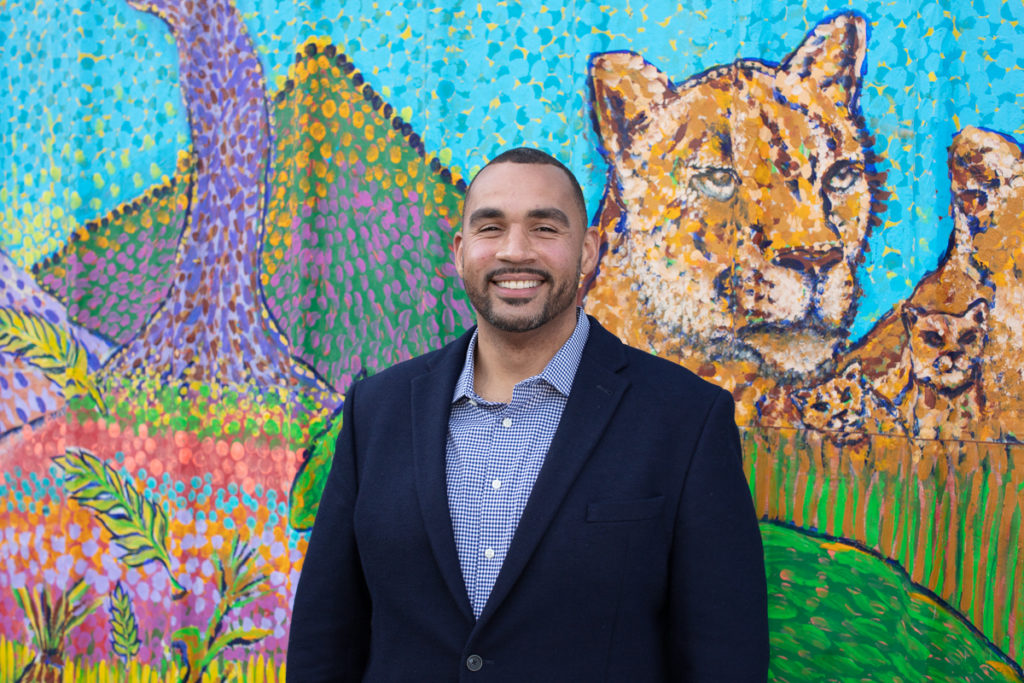
"The Friend role is nothing easy," says Spencer, "It's very serious, intensive work that is being done. One of our core assets is hope—and it can be difficult at times to keep the youth and the families hopeful. Life comes at you fast and they experience some very traumatic events. That can definitely take a lot of personal strength as a Friend."
When David landed on Spencer's roster, for example, he'd already been removed from his biological parents—mom was incarcerated and dad was out of the picture, so he was living with his aunt. David entered foster care and Spencer saw him through intake and innumerable placements. "This youth literally transitioned to about five different houses in a two to three-year span. It was insane," says Spencer.
"The kids are the heroes. We are not some angels that come and help them do all these amazing things. We are trying to get them to see the greatness that is already inside of them."
Spencer Hill, National Program Director, Friends of the Children
"I remember one night, it was like 10 p.m. and I got a call from the caseworker who was like, 'Hey, David's got to go out.' I went to the foster house and…" Spencer draws a long breath, "I just remember this kid. He just had a garbage bag, all his belongings in there, and he was just ready to go. It really touched me and made me tear up a little bit because, I mean, just no fear. He was just so desensitized to the situation. But in reflection of the role of a Friend and the impact that this makes—in this two to three-year span when he has bounced around so much, who's the most consistent person in his life? The Friend."
"Our history is showing that if you can intervene early in this child's life, you have the ability to break the cycle for that child, sometimes for their family, their siblings, and for the generations to come."
Terri Sorensen
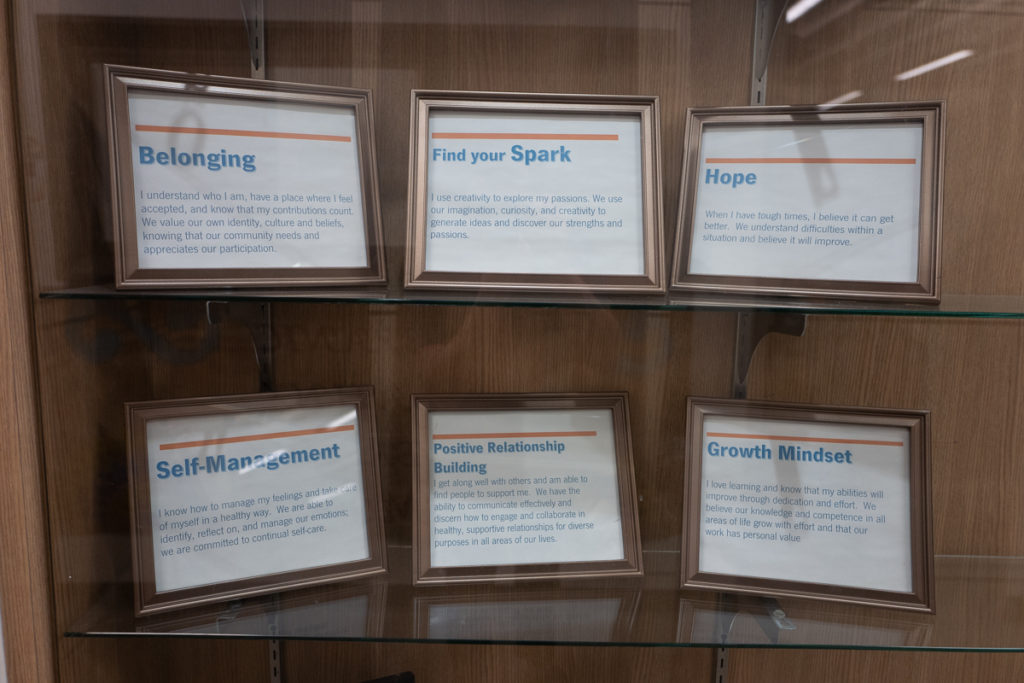
That's what happened for Jimmy. "I was born high and overdosing on cocaine," says Jimmy Tyrrell, who graduated from Friends of the Children 12 years ago. "When I was two, my father was murdered and my mom abandoned us at my grandparents' house—my father's parents' house. Left us in diapers with a trash bag wrapped around us, like, for a blanket."
Around town Jimmy's grandfather was known as Old Man Tyrrell, who beat cats over the head with hammers. "He was crude and cruel to my brothers and me. I mean, he loved us and protected us from a lot of the family, but he was abusive."
Jimmy was about nine and in fourth grade when he started with Friends of the Children, though most kids begin when they're six.
"I will never forget the first day my grandfather met my mentor. It was awkward, but it was kind of like a 'welcome to the family' kind of thing. John pulls up and gets out the car and he says, 'Hello, Mr. Tyrrell, I'm John Foster, I'm Jimmy's mentor.' And my grandfather was like, 'Well, thank God you're not black.' That was my grandfather, he was a very racist man. John took a breath and just said, 'Can I come in and meet Jimmy?' We played Legos together and they chatted the whole two hours he was supposed to be spending with me, but it was a safety net because I looked at my grandfather as my protector, so if he's OK with this person then I'm OK with this person."
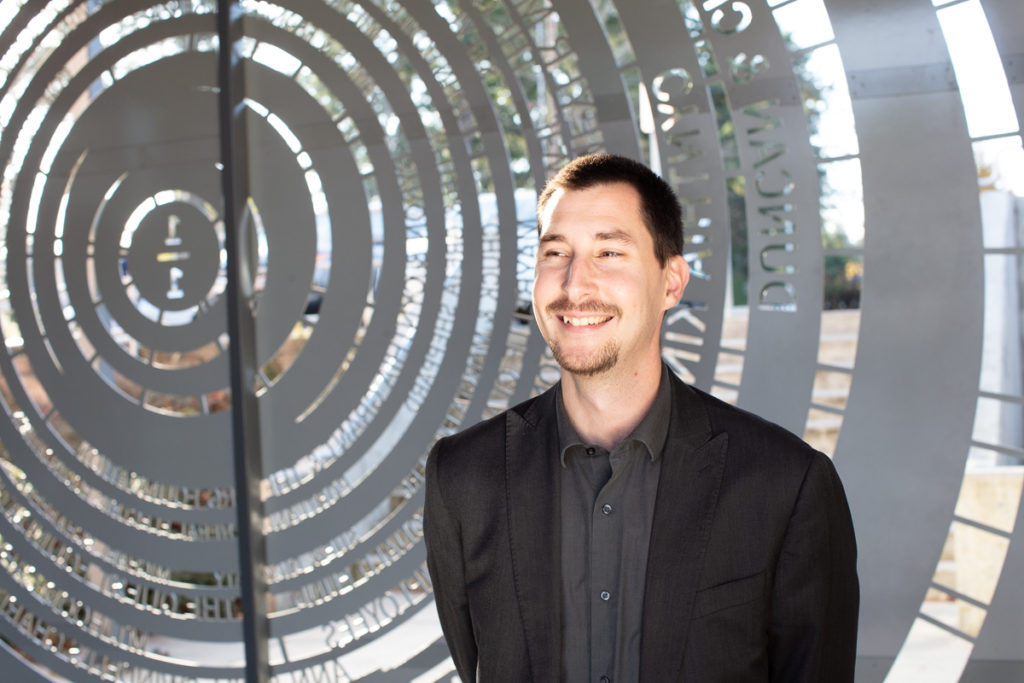
A year later Jimmy's grandfather passed away and the family descended into deeper chaos. "Once he was gone, the drugs and alcohol just increased. I remember calling John in the middle of all that and he just heard all the commotion going on. And he's like, 'I'll be there. I'll be there in a couple hours.' And he was. He picked me up and took me out of there. It was just chaos and dysfunction. It was just bad all around."
Everybody was dying left and right: Aunt Kim died of a drug and alcohol overdose. Her daughter was found hung underneath the staircase at a drug house. Cousin Donna died of Oxycontin overdose, then great-grandma died. "This is like in six-months, just back to back deaths," says Jimmy, "But John was there. He was there through it all."
"John was the only outsider that my family trusted. And he would tell me what he thought. He'd be like, 'I think you need to get the heck out of here. I think you need to go to college.' When I told my grandmother I wanted to go to college she just said, 'Our kind don't go to college."
Jimmy was 15 when his grandmother passed away and he was left facing foster care. "At a meeting with the Department of Human Services, we went around a table of probably 15, 20 family members, and they all were like, I can't do it. I can't take him. The only person that stood up was my mentor. He said, 'Well, I would take him if it didn't risk my job.'"
"I knew at that point that if I didn't start making decisions for myself that I wouldn't get where I needed to be. And I knew I had my mentor, I knew I had John to be there to help guide me throughout and support me throughout anything I needed or wanted to do in life."
Jimmy Tyrrell, Friends of the Children Graduate
"There was no one willing to take me in. So yeah, I had to grow up. It was time for me to become a man and make my own decisions. It would've been a whole different world if I didn't take charge and John wasn't there."
John. One caring, consistent adult. A friend through phenomenal hardship and loss. John couldn't change the context or circumstances of Jimmy's life, but he was a present and intentional loving strength—the only one encouraging Jimmy to a future different than his family's past. And he's what it took for Jimmy to break the generational cycles of poverty, addiction, and violence.
"If John didn't put forth the effort, no one else would have. No other adults in my life would have put forth the effort to make sure I succeeded. So he was determined to be that adult."
Jimmy Tyrrell, Friends of the Children Graduate
"When I was getting into drugs and the wrong crowd, he was there," says Jimmy. "He'd say, 'Look at your family. You know where this life is going to lead you. You can't have one foot in one foot out. If you can keep up with school and get to 18 and get away from your family, you're going to succeed.' So he was the supportive adult in my life that held me accountable when no one else did."
Having earned his associates degree in criminal justice from Portland Community College, Jimmy now serves the Yamhill County Circuit Court as a clerk for Judge John L. Collins. Eventually he'd like to become a probation officer. "It's like dealing with my family, except now I get paid for it and I get to leave at 5 p.m. every day," Jimmy jokes, sort of.
"I grew up in a family that was full of criminals, full of drug addicts, and it was kind of beaten into our brains young that you don't trust the system. Cops are crooked, judges are crooked. It was just the long generation of alcoholism, drug addicts, way before I came in the bloodline," says Jimmy. "With my kids, it scares me as they get older, they're going to have questions of why this and why that. But at least all it will be to them is stories instead of the reality that I had to deal with. I finally broke the chain."
"You don't have to accept what's been given to you. Like, my blood family was given to me, but I created a family. My former fourth grade teacher, she's my aunt now. My mentor John, he's like an uncle to me. Just because you were given kind of a crappy hand in life doesn't mean that you have to keep it."
Jimmy Tyrrell, Friends of the Children Graduate
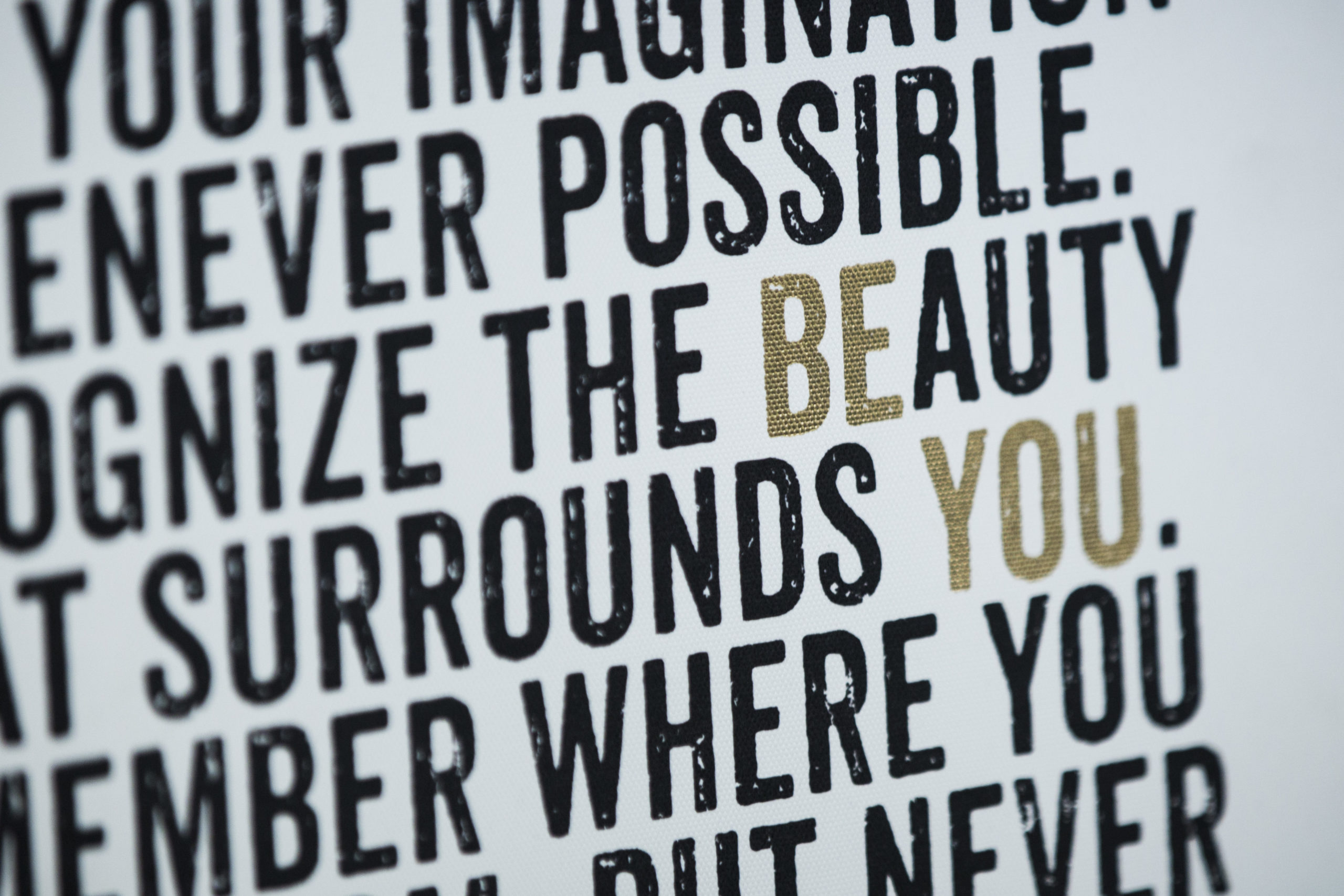
Whether with different mentors over the course of middle school or two mentors over the course of childhood and adolescence, the mission critical crux of true impact of mentorship is this: A meaningful, consistent relationship with a caring adult.
"I remember going to all these schools and interviewing," says Liz, "and I would go by myself. The chair next to me empty. But the feeling of Arthur being there was still there, which is so strange. I knew he wasn't there but the feeling of still making him proud... Now I know, as an adult, they call that a positive internalized attachment figure. That just means that the voice that he spoke to me became the voice that I used to speak to myself."
"One of the things that we've done well is we've combined purpose in what we're doing mission-wise with business sense," says Jeff. "We're envisioning there being a large research arm behind the Arthur Project, that does studies within our programs to write articles and content, ultimately developing training materials that can build a science behind relationships and extend what we're trying to do."
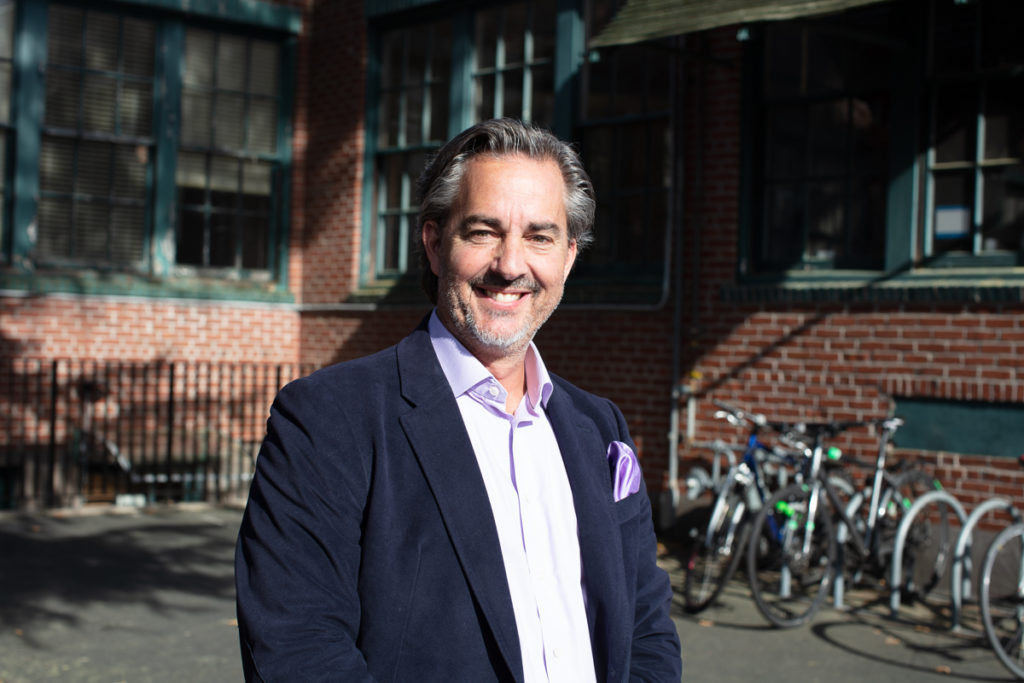
And in many ways, it's the private sector that's ensuring sustainability. Steve Fogg, for example, is CFO of Marquis Companies and Consonus Healthcare. "We were very passionate about wanting to provide an avenue for our staff and for our residents to support charitable organizations that they were interested in. Friends of the Children quite frankly is the best relationship that we have." he says.
"Many of the kids that are in the Portland program are spending time in our home office on a consistent basis where they'll come in, tour the office and meet with certain departments, learn what they do, get them thinking about what a working environment looks like. At any given time we have three to eight graduated kids that work in our company, and that all started as part of our relationship with Friends of the Children," says Steve.
"I think one of the core reasons for success with Friends over the years so far has been primarily staying focused on the 12 year model, those metrics of graduating high school, not having pregnancy, staying out of the criminal justice system. It's a pretty simple approach."
Steve Fogg, CFO of Marquis Companies and Consonus Healthcare
The recipe for success, Terri says, is in leadership: "You have to have strong, courageous leadership at the executive level and the board level. You have to hire the right people that are committed and constantly seeking to learn and do better. You have to have internal and external evaluations so you know that what you're doing is really working and having the impact that you had hoped it would and/or modifying it to improve. And then financial sustainability is a big one. You can't be helpful to anyone else if you can't sustain your organization with high-quality people doing great work."
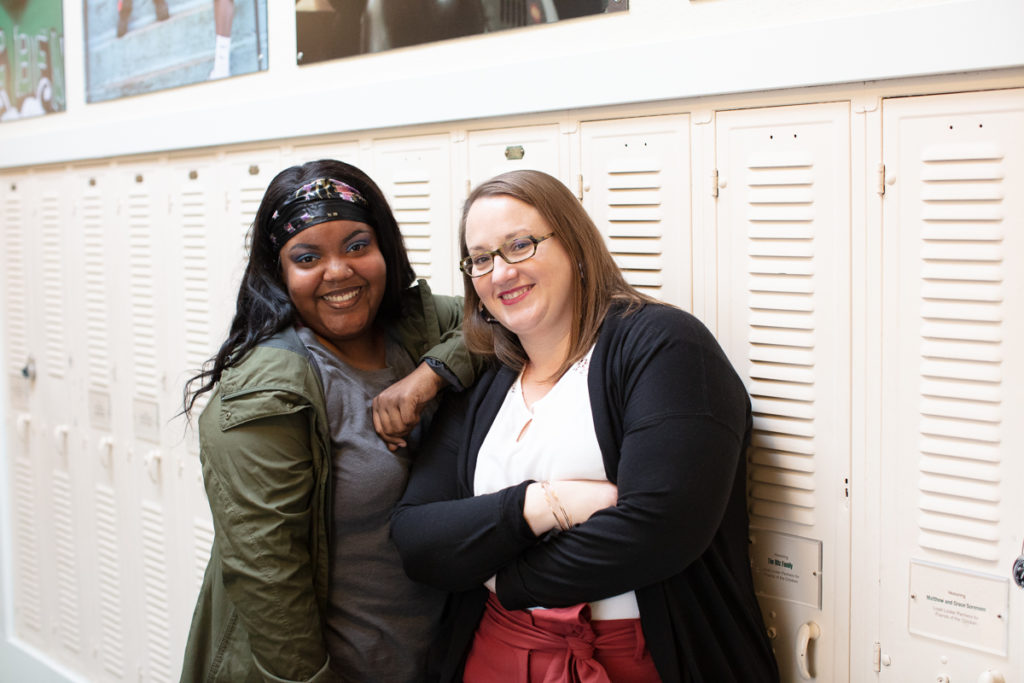
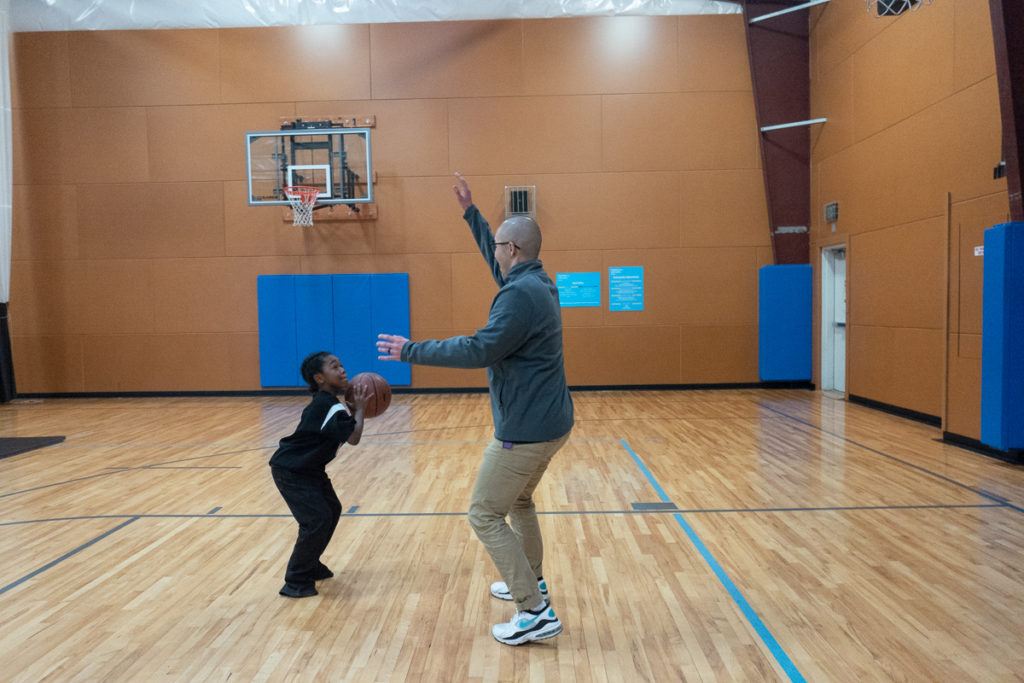
Both organizations have received extensive coaching and resources as participants in Stand Together Foundation's Catalyst Program. "They surround you with both other people from other nonprofit groups and their own team to help you think about how to be a powerful organization, how to run, in many ways, a business, how to stay true to your mission. And I think because Liz and I were so young and new into this, we absorbed everything," says Jeff.
"We are relentless so that they are resilient." says Terri. "In this work you can't quit. You can't stop. You have to keep going back even though it's hard or even though you take two steps back for every one step forward. But in the end, being relentless has helped our children be resilient, our organization be resilient and grow and thrive."
Terri Sorensen
***
The Arthur Project is supported by Stand Together Foundation, which partners with the nation’s most transformative nonprofits to break the cycle of poverty.
Learn more about Stand Together's efforts to build strong and safe communities, and explore ways you can partner with us.
